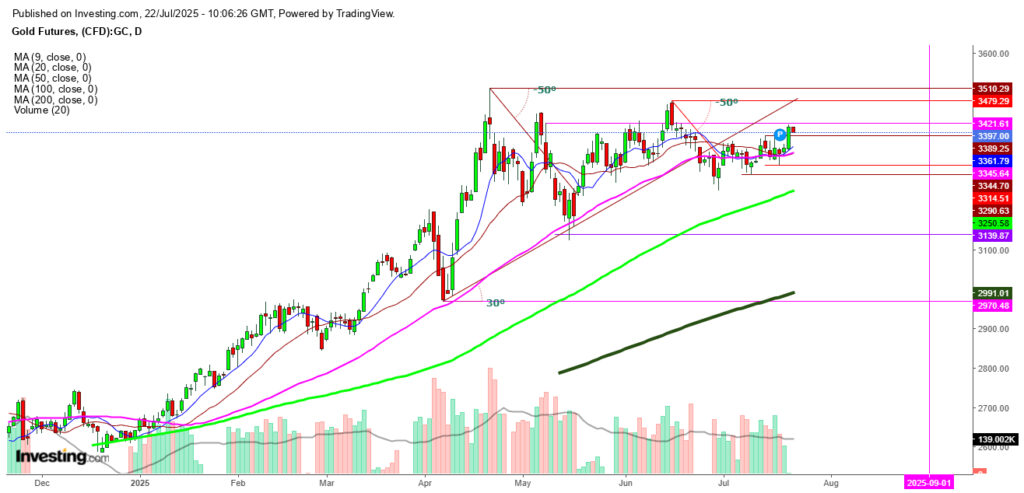Amid the constantly shifting landscape with new uncertainties emerging daily, both investors and analysts are finding it increasingly difficult to maintain focus, especially when it comes to devising strategies for predicting the price movements of precious metals. This challenge is further exacerbated when political figures actively attempt to steer the prices of commodities in a preferred direction.
In the current climate, the valuation of gold seems particularly perplexed by these unfolding events. This situation is prompting financial experts worldwide to explore novel approaches for forecasting gold’s price trajectories in both the short term and long term. Nowadays, traditional predictive tools such as demand and supply dynamics, interest rate trends, inflation rates, and moving averages appear to be at a loss, struggling to anticipate gold’s next move as these metrics behave contrary to expectations. Despite this, gold futures have managed to hold their ground, refusing to decline even as they lose their appeal as a safe haven due to elevated prices. This resilience is largely driven by the lingering anxiety over U.S. tariffs and interest rates, which continues to bolster demand for gold as a haven.
The drama surrounding gold futures is particularly heightened as the August 1st deadline for the imposition of U.S. tariffs looms. Market sentiment has taken a hit, dampened by diminishing hopes for a trade agreement between the EU and the U.S. With the European Union poised to implement retaliatory tariffs in response to what are perceived to be higher-than-expected U.S. tariffs, investors are on edge. Adding to the tension, the Trump administration has recently indicated a reluctance to extend the August 1 deadline. However, it’s possible that in order to avoid exacerbating trade tensions during such a crucial period, the U.S. might either delay this deadline or introduce a more nuanced strategy if President Donald Trump wishes to guide global trade along a particular trajectory.
Currently, gold futures are trading within a tight range, biding time until a clearer picture emerges post the tariff deadline. Should this deadline be postponed, gold futures could experience a downturn, potentially plummeting to $3000 levels in August. Conversely, some analysts remain bullish on gold’s prospects, forecasting a surge to $3,700 an ounce by 2026, significantly above the current consensus on Wall Street of $3,073. They argue that technical indicators hint at a bearish trend for gold futures, driven by the anticipation of the uncertainty dissipating and a consequent strengthening of the U.S. dollar, a goal President Trump is determined to achieve at all costs.
Turning our attention to technical analysis, the daily chart for gold futures reflects pronounced bearish pressure, notably below the immediate resistance level of $3421. This comes despite a recent volatile movement from the immediate support at the 9-day moving average (9 DMA) at $3361 and the 50-day moving average (50 DMA) at $3345.
If gold futures breach the key support levels at 9 DMA and 50 DMA in the forthcoming sessions, it is conceivable that the next significant level of support at $3314 could be the next to be tested. In contrast, a sustained move above the immediate resistance at $3421 would offer bears an opportunity to initiate fresh short positions above $3455, with a stop loss at $3477, as indicated by the formation of a bearish doji in the daily chart.
Additionally, dollar Index futures are suggestive of an impending robust reversal from their current stance, which could further amplify the bearish momentum for gold in the coming week.
In light of this analysis, it is prudent to underscore that any investment in gold carries inherent risks. As such, readers should exercise caution and conduct thorough research before making any financial commitments based on the observations presented here.
In summary, the trajectory of gold prices in the face of geo-political tensions and economic uncertainties remains a complex puzzle. While traditional analysis tools struggle to provide clear directions, the evolving market dynamics and geopolitical maneuvrings continue to influence gold’s appeal as an investment. The imminent deadlines and ongoing trade discussions are critical factors that will likely shape gold’s short-term and long-term futures. Investors and analysts alike must remain vigilant, adapting to the new realities of the global economic landscape.



